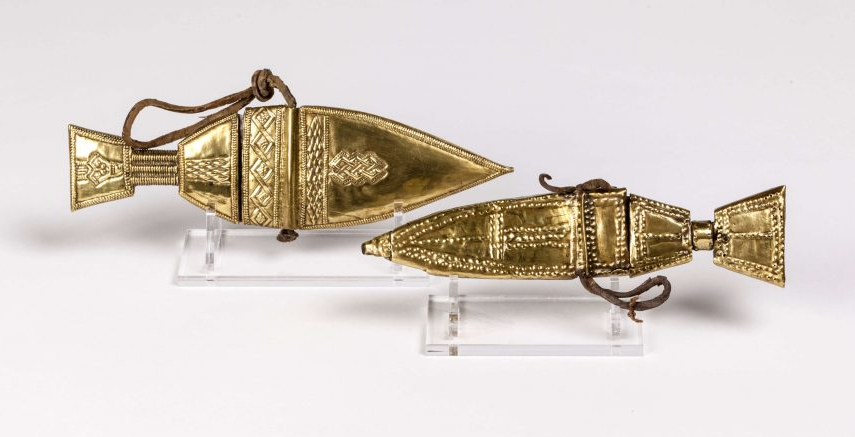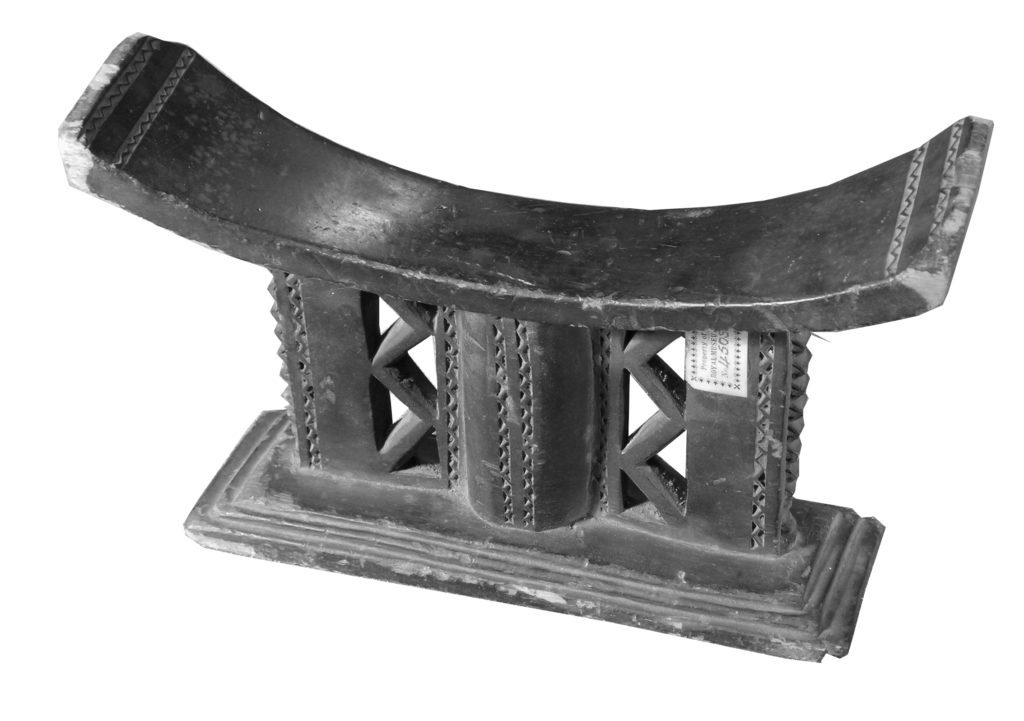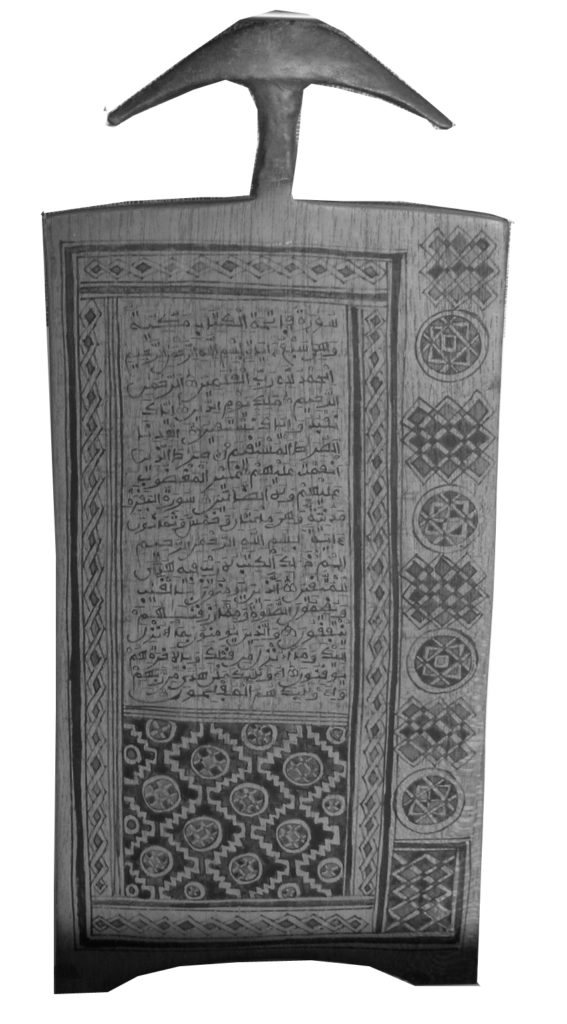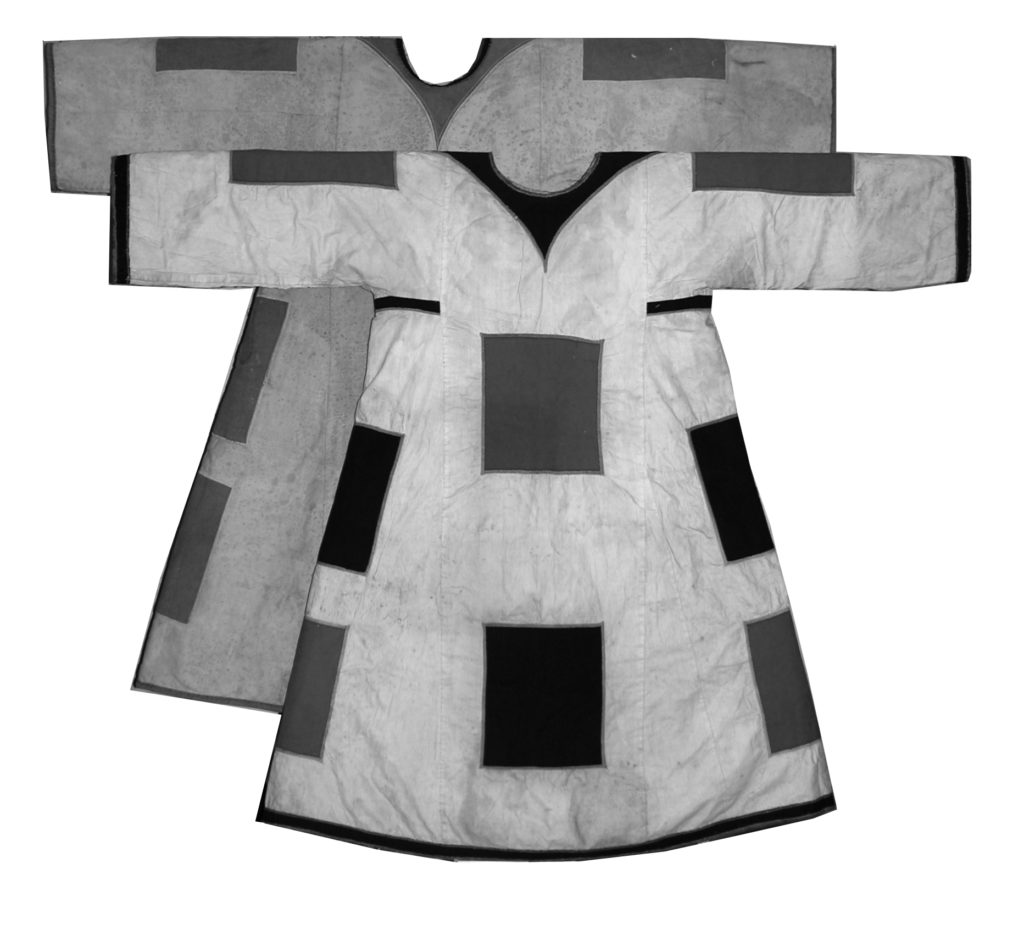
African dagger in scabbard
18th to early 19th century; Fernando Po, West Africa
Wood and metal
Small dagger in gold-covered scabbard collected in 1821-26.
Presented by Captain Thomas Boteler, RN, to Canterbury Philosophical and Literary Institution Museum, 1827-28, and acquired through purchase of the Museum by Canterbury Corporation, 1846-47
Reference: 4613
Can be found: Heroes and Villains

African dagger in scabbard 18th to early 19th century; Fernando Po, West Africa
Wood and metal
Small dagger in gold-covered scabbard collected in 1821-26.
Presented by Captain Thomas Boteler, RN, to Canterbury Philosophical and Literary Institution Museum, 1827-28, and acquired through purchase of the Museum by Canterbury Corporation, 1846-47
Reference: 4612
Can be found: Heroes and Villains

African hair pin
19th century
Bone
This hair pin has four long prongs and a spoon-shaped handle, which has been described as a snuff ladle.
Reference: 4633
Can be found: Heroes and Villains

African headrests
19th century; Ashanti, Ghana
Painted wood
The smaller headrest is typical of the Ashanti people in the former Gold Coast, now Ghana. It is decorated with a wash of blue pigment. The larger headrest follows the Ghanaian shape but has elements of southeast African decoration. Cross-cultural styles like this were used in South Africa. The original black paint has worn with use.
Headrests were used by African men of fairly high status and were significant personal objects, protecting the owner’s head and hairstyle.
Reference: 4508, 4509
Can be found: Heroes and Villains

African sculpture, Qur’anic board, cap and gourds
20th century; Yoruba, Hausa and Ashanti peoples, Nigeria and Ghana
Wood and bronze
Two of the Yoruba sculptures are ritual ‘deceased-twin substitute’ carvings. The third is a small figure with distinctive hairstyle. Such African sculptures, with bold abstract features, have had a huge influence on modern artists. The doll is Ashanti from Ghana and would be carried by a pregnant woman to promote beauty in her unborn child.
Ghana is a centre of gold mining and the Ashanti are best known for their intricate tiny brass sculptures used to weigh gold. Dried and decorated gourd rinds are from the Hausa people, northern Nigeria, as is the Qur’anic writing board of the Hausa people has been decorated to celebrate a pupil’s achievement at school, and the embroidered cap.
Lent by Dr David Heathcote, 2012
Reference: CANCM:nn
Can be found: Heroes and Villains

African spear and shield
19th century; Mahdi people, Sudan
Wood, metal, animal hide
Captain J Graham brought back three spearheads and two spears described as ‘small’ but with shafts so long they had to be broken for transport. One spearhead was said to have belonged to the Khalifa, the Mahdi’s successor.
Collected by Captain J. Graham, 1898, and presented by General Sir James Graham, KCB, 1902
Reference: 3007, 3009
Can be found: Heroes and Villains

African sword
19th century; Akan Gold Coast (Ghana)
Metal and wood
The weapon with double-balled handle and openwork decoration on the blade is from the Akan area of the Gold Coast and probably an Ashanti sword.
Probably presented by Captain Thomas Boteler, RN, to Canterbury Philosophical and Literary Institution Museum, 1828, and acquired through purchase of the Museum by Canterbury Corporation, 1846-47
Reference: CANCM:nn
Can be found: Heroes and Villains

African sword
19th century; Congo
Metal and wood
This is a Congo ceremonial sword used among the Ngombe, Ngbandi and Lokele peoples.
Probably presented by Captain Thomas Boteler, RN, to Canterbury Philosophical and Literary Institution Museum, 1828, and acquired through purchase of the Museum by Canterbury Corporation, 1846-47
Reference: CANCM:nn
Can be found: Heroes and Villains

African sword and scabbard
19th century; Mahdi people, Sudan
Metal and wood
A souvenir with broken blade. It belonged to a fighter in the Islamic Mahdi army massacred by British troops.
Collected by Captain J Graham, 1898, and presented by General Sir James Graham, KCB, 1902
Reference: 3004
Can be found: Heroes and Villains

African water pot and water juj
20th century; Hausa people, Northern Nigeria
Earthenware, gourd rind
The pot was formed by pressing clay into an earthen hollow, making two half-rounds then joining them together and smoothing by hand. It sits on a ring when carried on the head. The jug is used for washing before entering a mosque.
Lent by Dr David Heathcote, 2012
Reference: CANCM:nn
Can be found: Heroes and Villains

‘Jibbah’ tunics
1881-98; Mahdi people, Sudan
Cotton and wool
These Jibbah or Jibbeh tunics belonged to officers in the Islamic Mahdi army. They are made from strips of hand-spun and woven cotton with appliqué of coloured woollen patches. The frugality of these garments and their clear re-use of textiles accord with the Islamic principles of humility and poverty adopted by the Mahdists. The patterned design of these tunics helped make Mahdi officers visible to their troops in battle.
Collected by Captain J Graham, 1898, and presented by General Sir James Graham, KCB, 1902
Reference: 4752, 4753
Can be found: Heroes and Villains
